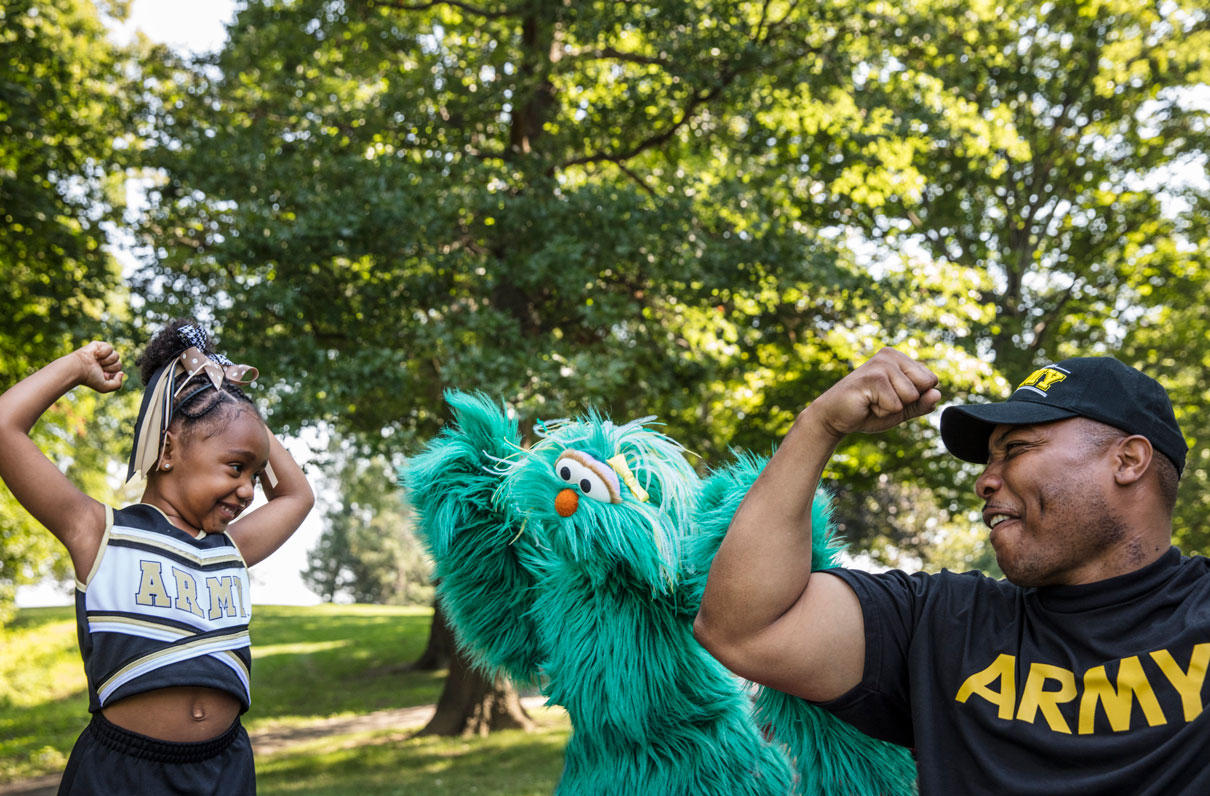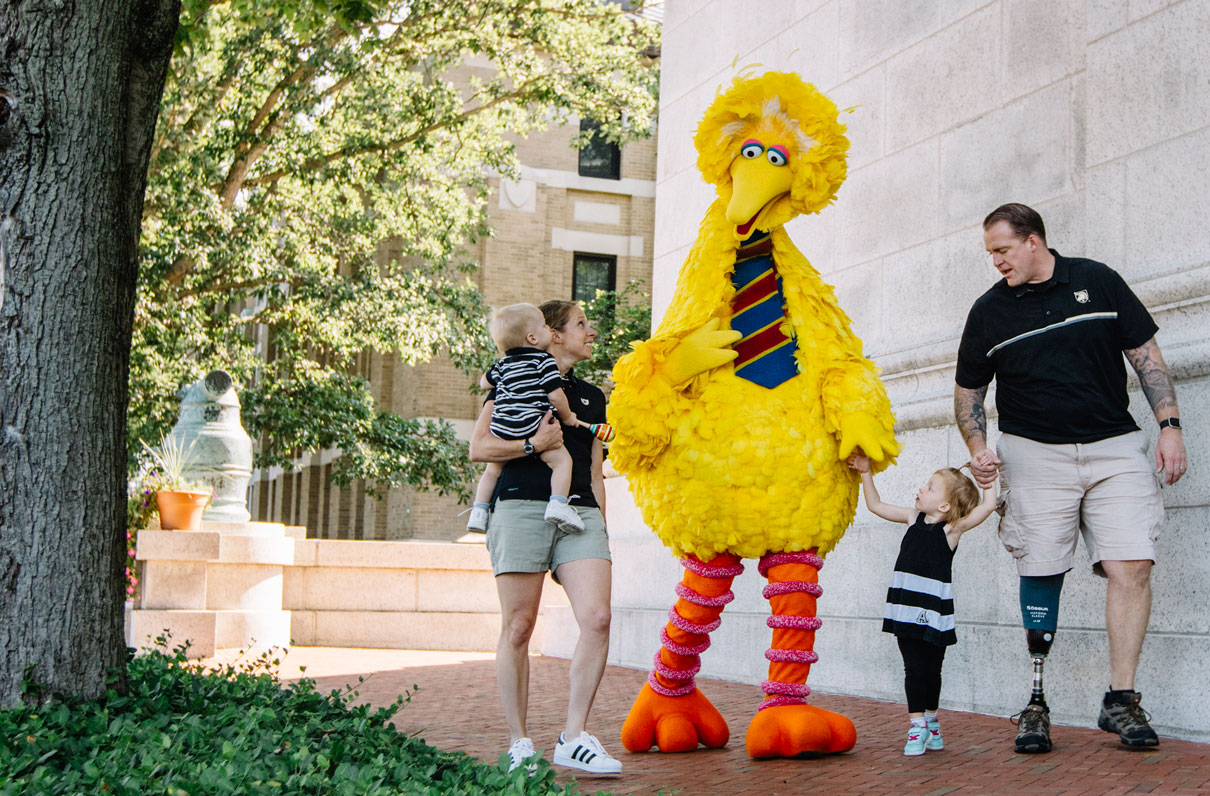This article is part of a series for Month of the Military Child about services that help kids cope with the military lifestyle. It appeared in the April 2018 issue of Military Officer magazine.
Sesame Street long has been a trusted place for kids to explore serious topics, from the 1982 death of Mr. Hooper - one of the show's original human characters - to last year's introduction of Julia, an autistic Muppet. Deployments, combat injuries, and frequent moves are no exception.
For more than a decade, characters like Elmo, Grover, and Rosita have provided servicemembers' children with tools to cope with some of the more challenging aspects of growing up military. When military deployments ramped up around the 2007 Iraq War surge, leaders at Sesame Street began looking at how they could help their 2- to 8-year-old viewers.
The constant change of military life contrasts with children's need for stability, consistency, and routine, said Jeanette Betancourt, senior vice president for U.S. Social Impact at Sesame Workshop.
“These resources … not only help children cope with that, but also guide the grownups around children on how to talk about it - and talk about it easily during everyday moments,” Betancourt said. “We now have an intergenerational connection because we have parents who've grown up with Sesame and feel connected to safe and trusted characters, as well as kids experiencing it.”
Sesame Street for Military Families offers a host of online tools, including videos, mobile apps, and downloadable art projects, that encourage children to talk about their feelings. The videos feature real military kids' stories or use younger Sesame Street characters, such as Elmo, to ask questions that might be on a child's mind.
“That's almost like having another child talk to you,” Betancourt said. “It lets them know they're not alone and models the kinds of feelings, questions, excitement, or concerns any child would have.”

(Courtesy of Sesame Street)
All their materials feature real servicemembers and veterans. There's even a video for health care providers that features advice from Navy Vice. Adm. Raquel Bono, director of the Defense Health Agency.
Sesame Street has distributed more than 5.5 million resource kits, posters, activity books, and guides to military families, and their mobile apps have had more than 2.7 million downloads, Sabrina Huda, a senior manager at Sesame Workshop, said.
Betancourt and her team continue developing new resources for military children by researching trends and challenges families face. They're currently researching ways to support children whose parents were injured in combat before they were born. Those kids don't have a connection to the military community, she said, but they're still affected by it.
The goal is to help build resilience in children so they're able to deal with their feelings and concerns in healthy ways. Sesame Street not only helps kids prepare for school, but it also can help them develop social and emotional readiness, Betancourt added.
“Children thrive when they feel safe, secure, loved, and able to express worrisome feelings,” she said. “That sets the foundation for long-term resiliency.”
Watch Elmo prepare for a loved one's deployment:
